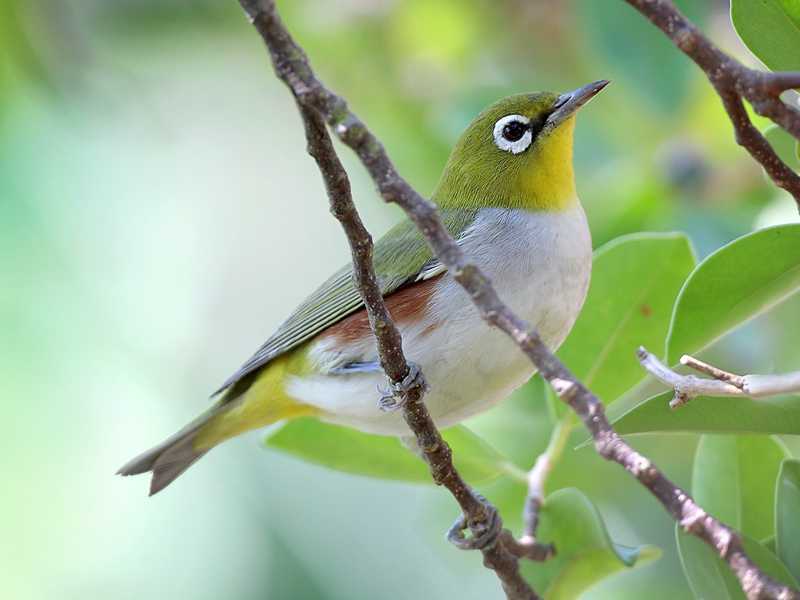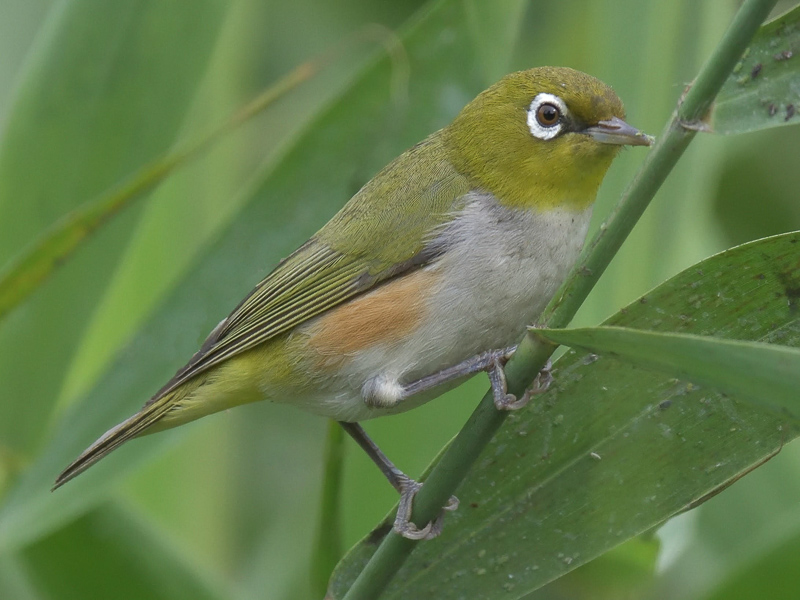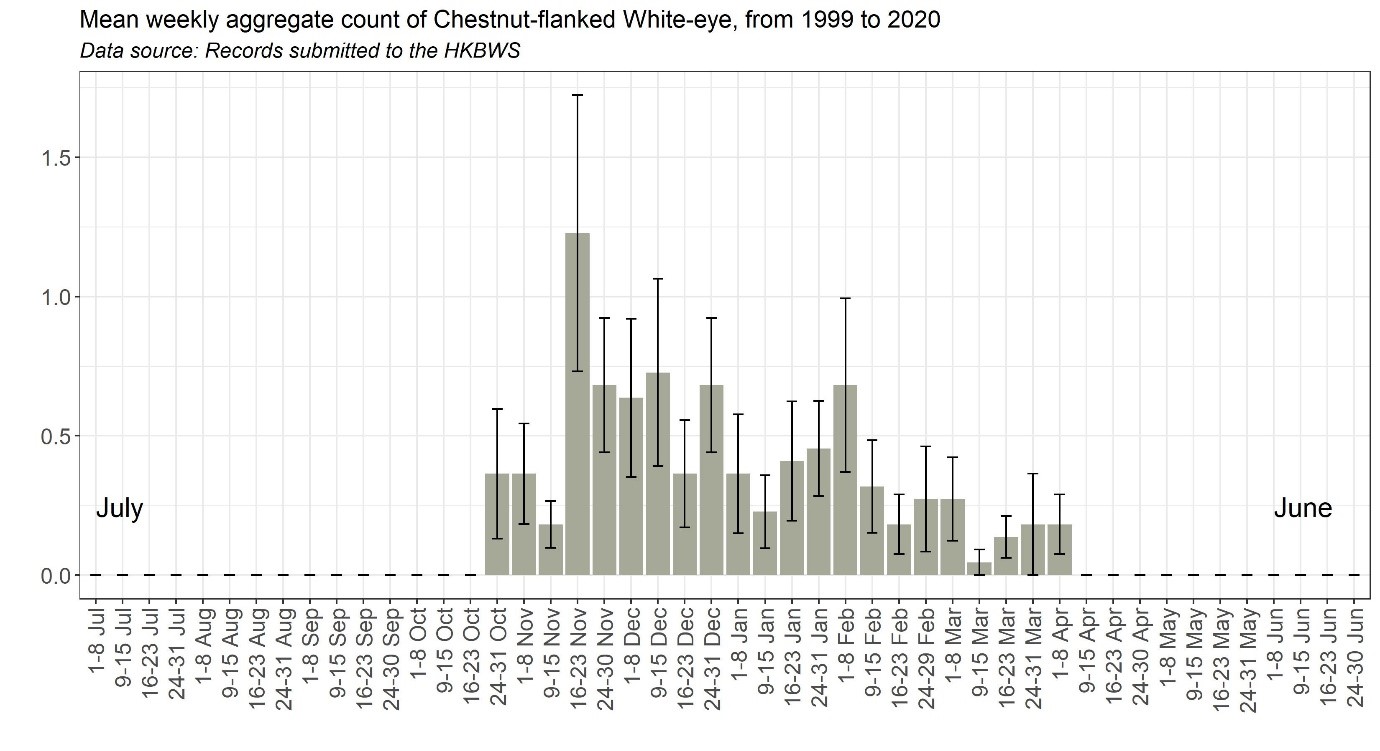Chestnut-flanked White-eye Zosterops erythropleurus 紅脇繡眼鳥
Category I. Uncommon passage migrant and winter visitor to forest areas.
IDENTIFICATION

Oct. 2010, Michelle and Peter Wong. Presumed male.
Differs from Swinhoe’s White-eye in usually having a rusty smear on the flanks, slightly larger size, longer primary projection, pale pinkish base to the bill, a broader white orbital ring contrasting with more extensive and diffuse black lores, stronger contrast between more restricted yellow throat and white chest, weaker contrast between throat and ear coverts, and duller upperparts with no yellow on forehead. See Leader (2000) for more detail. The male flank patch is deep in tone.

Jan. 2020, Benjamin Li. Female or immature.
Females and immatures have a pale rust patch on the flanks, though on some presumed first-years it is very faint or absent. The lack of contrastingly dark lores suggests this may be first-year.
VOCALISATIONS
Compared to Swinhoe’s White-eye, the frequently uttered, sharply downslurred call ‘tseeoo’ is purer in tone and lacks the slight buzzing quality.
DISTRIBUTION & HABITAT PREFERENCE
Usually found in company with flocks of Swinhoe’s White-eye and occurs in similar locations, primarily broadleaf forest and shrubland. It has been recorded throughout much of HK, including Po Toi.
OCCURRENCE
Up to three Chestnut-flanked White-eyes were first seen at Pok Fu Lam on 14 November 1970, which was followed by two at Eagle’s Nest on 28 November 1978, but it was not until the early 1980s that it became apparent that small numbers occur regularly in winter. Figure 1 indicates main presence from the third week of November to the first week of February. Higher numbers in the second half of November and first half of December indicate passage occurs. Extreme dates are 21 October 1995 and 8 April 1995.
Usually no more than three birds are seen together, with the highest count being eight at Lead Mine Pass on 3 December 1995.
This species is a popular cagebird, and Webster (1975) included it in the HK List as a species considered possibly to be of ex-captive origin. Although it is now clear it does occur naturally, some records do refer to ex-captive individuals: at least two trapped birds showed signs of captive origin, and records from urban areas remain suspect even if they occur at seasons when wild birds could occur.
BEHAVIOUR, FORAGING & DIET
Associates with other species in non-breeding season, including Swinhoe’s White-eyes. Wintering birds may remain in the same general area for several weeks. Insectivorous, feeding in mixed-species flocks.
RANGE & SYSTEMATICS
Monotypic. Breeds northeast China and Ussuriland, Russia; winters in southwest China south through northern Indochina to central Thailand. In China breeds from east Hebei to Heilongjiang and winters in the southwest (Liu and Chen 2020). The pattern of records in HK indicates that small numbers also winter coastally in southern provinces.
CONSERVATION STATUS
IUCN: Least Concern. Population trend decreasing.
Figure 1.

Leader, P. J. (2000). Brieven. Identification of Chestnut-flanked and Japanese White-eyes. Dutch Birding 22: 222-225.
Liu, Y. and Y. H. Chen (eds) (2020). The CNG Field Guide to the Birds of China (in Chinese). Hunan Science and Technology Publication House, Changsha.
Van Balen, B. and E. de Juana (2020). Chestnut-flanked White-eye (Zosterops erythropleurus), version 1.0. In Birds of the World (J. del Hoyo, A. Elliott, J. Sargatal, D. A. Christie, and E. de Juana, Editors). Cornell Lab of Ornithology, Ithaca, NY, USA. https://doi.org/10.2173/bow.cfweye1.01
Webster, M. A. (1975). An annotated checklist of the birds of Hong Kong. Hong Kong Bird Watching Society, Hong Kong.

